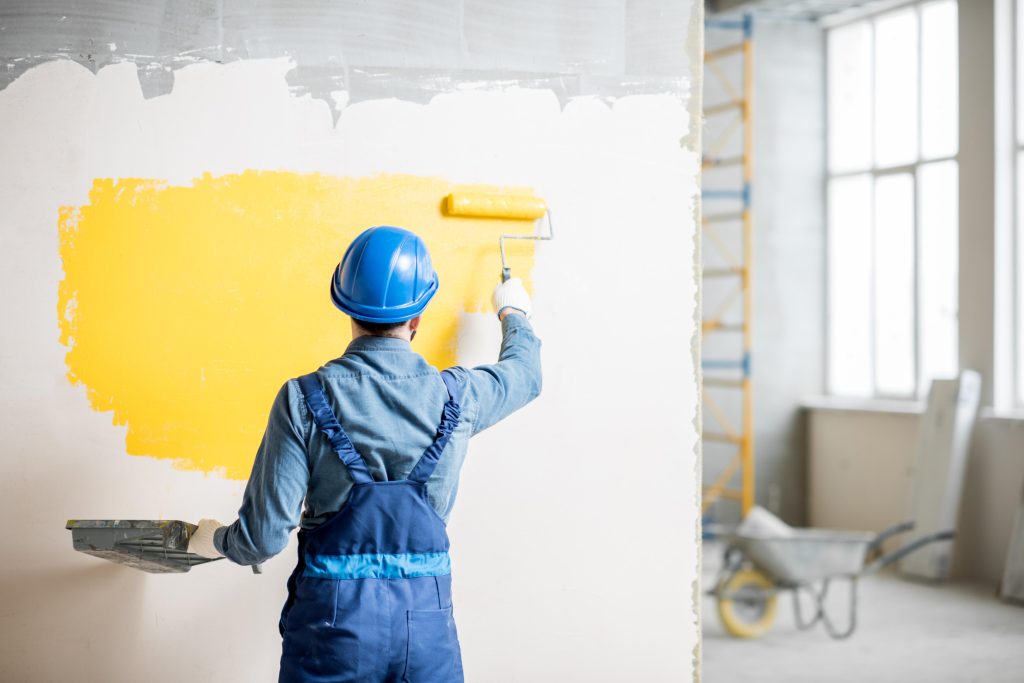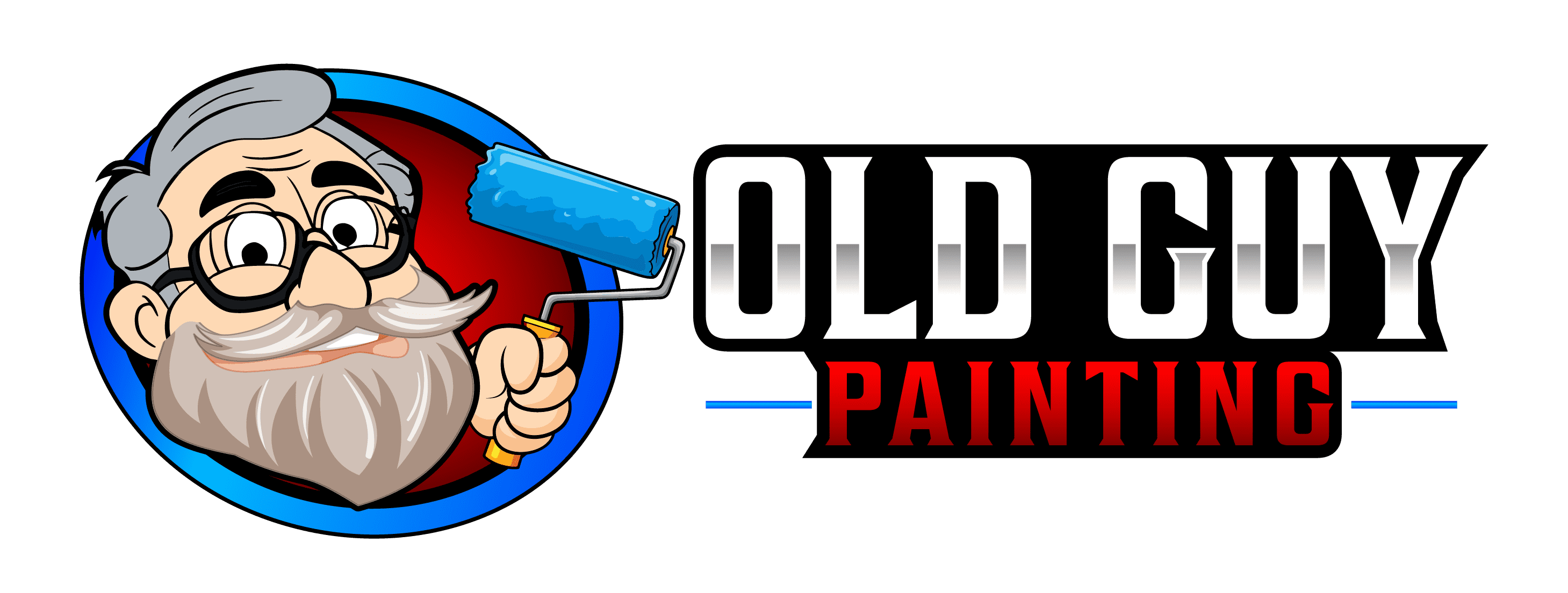
Interior vs. Exterior Property Painting: What’s Right for Your Building?
Introduction
When planning a paint job for your property, one of the first decisions you’ll face is whether to commit to interior property painting, exterior property painting, or both. Each has its own challenges, costs, preparation needs, durability concerns, and aesthetic impact.
In this guide, we’ll explore:
- The differences between interior and exterior property painting
- When and why each makes sense
- How property painting fits into your overall maintenance and design plan
- Key considerations, costs, and tips to get the best results
- FAQs to help you decide
By the end, you’ll have clarity about which type is right for your building, or whether a combined approach is best.
Why “Property Painting” Matters
Before diving into interior vs exterior, let’s define property painting in this context. Property painting refers to applying coatings (paints) to both the inside surfaces (walls, ceilings, trim, cabinetry) and the outside surfaces (siding, trim, facades, exterior wood, masonry) of a building to refresh, protect, or transform its appearance.
Good property painting does more than look nice — it:
- Protects surfaces from weather, UV rays, moisture, rot, and wear
- Helps increase property value and curb appeal
- Contributes to a consistent design identity
- Reduces long-term maintenance costs when done well
When deciding between interior and exterior work (or both), understanding the tradeoffs and best practices is key.
Interior Property Painting vs Exterior Property Painting: Key Differences
Below is a comparison of the major distinctions between interior property painting and exterior property painting.
| Factor | Interior Property Painting | Exterior Property Painting |
| Environmental Exposure | Minimal exposure to weather, no direct sun, wind, rain | Full exposure to UV, temperature shifts, moisture, insects, mold |
| Surface Types | Drywall, plaster, wood trim, ceilings | Siding (wood, vinyl, stucco, brick), exterior trim, fascia, masonry |
| Paint Formulation Requirements | Emphasis on low-odor, low-VOC, washable finishes | Need for weather-resistant, UV-resistant, flexible, mildew-resistant paints |
| Preparation & Repair Needs | Filling holes, smoothing joints, drywall repairs, masking | Power washing, scraping, caulking, repair of wood rot, priming bare surfaces |
| Durability & Maintenance | Often lasts 5–8 years (or more with good quality) | Needs repainting or touch-ups more frequently — often within 7–15 years depending on climate |
| Color & Design Constraints | More freedom with bold or dramatic colors, accent walls, decorative finishes | More cautious—neutral palettes or complementary trim colors to fit with neighborhood and curb appeal |
| Cost & Logistics | Easier access, less scaffolding or safety gear, lower risk | Requires ladders, scaffolding, safety measures, possibly permits or HOA approval |
| Impact & Visibility | Affects interior ambiance, mood, and inhabitant comfort | Impacts curb appeal, first impression, property “face” to the world |
These differences mean that choosing interior vs exterior property painting (or combining them) should be based on your priorities, budget, condition of surfaces, and desired impact.
When to Choose Interior Property Painting
You should lean toward interior property painting when:
- You want to refresh, modernize, or repair the inside of your home or building
- You are doing renovations or remodeling that change layouts, lighting, or finishes
- The exterior is in good condition and doesn’t require repainting yet
- You aim to improve living comfort, change interior style, hide wear and tear
Some specific triggers:
- Scuffs, stains, peeling paint inside
- Water damage, smoke or odor issues
- Wanting to update color palettes to match new furnishings
- Preparing interior units for resale, lease, or staging
Because interior painting is less exposed, you have more flexibility in color, finish, and frequency of repainting.
When to Choose Exterior Property Painting
Exterior property painting is necessary in these scenarios:
- The current exterior paint is peeling, chalking, or failing
- Wood trim or siding is exposed, rotting, or showing wear
- The building has never been painted or hasn’t been repainted in many years
- You want to boost curb appeal or refresh the external identity of the building
- You plan to sell or rent and want a strong first impression
Because exterior surfaces face the elements, high-quality materials, proper prep, and durable coatings are critical to achieving long life and performance.
Can You (or Should You) Do Both?
In many cases, a combined approach is best:
- If your interior and exterior are both aging, tackling them together can be more efficient (mobilization, contractor scheduling, color palette alignment)
- Coordinating interior and exterior tones ensures design continuity (“brand identity” for commercial, or cohesive style for residential)
- Some maintenance cycles align (e.g., exterior trim touch-ups and interior trim refresh)
However, budget constraints, access issues, or urgency may require staging the work over time.
Service-Oriented Focus: Professional Painting Services for Property Owners
While many property owners consider DIY, the complexity of high-quality property painting often warrants hiring professionals. Here’s where Old Guy Painting comes in:
- Residential & Commercial Property Painting Services — we offer both interior and exterior painting for homes, multi-unit buildings, and investment properties
- Surface Inspection & Repair — evaluating substrate conditions, repairing rot, and preparing surfaces properly
- High-Quality Paints & Finishes — selecting formulations suitable for each application
- Color Consultation & Design Guidance — helping clients pick harmonious and functional palettes
- Warranty & Maintenance Advice — giving clients realistic timelines and maintenance plans
If you decide you want a professional to handle the job, you’re not just paying for labor, but for peace of mind, longevity, and aesthetic quality.
Key Considerations for Property Painting Projects
Here are critical factors to evaluate when deciding or planning a painting project:
- Surface Condition & Substrate Health
Whether interior or exterior, the underlying surface must be sound. Rotten wood, dampness, mold, or cracks must be remedied first.
- Climate & Weather Exposure
Climate drives paint performance. In Oregon (and the Pacific Northwest), moisture, rain, sun, and even freeze/thaw cycles all influence choices.
- Paint Quality & Specification
Using premium exterior or interior grade paints, priming correctly, and selecting appropriate finishes greatly impacts durability.
- Safety, Access & Logistics
Exterior work often involves ladders, scaffolding, or lifts. Interiors may require drop cloths, protection, and minimal disruption.
- Color & Lighting
Colors look different under indoor vs outdoor light. Test swatches in situ, both inside rooms and on external walls.
- Budget & Phasing
You may need to phase work—doing interiors first, then exteriors or focusing on critical sections first.
- Permit & HOA Considerations
Some neighbourhoods or historic districts require approval for exterior colours, particularly for multi-unit or visible façades.
- Maintenance Plan & Warranty
Know when touch-ups or repaints will become necessary. High quality prep pays off in maintenance savings.
Latest Trends & Technology in Property Painting (2025 Edition)
To make your blog timely and relevant, let’s integrate newer trends shaping painting and property finishes today.
Sustainable & Low-VOC / Eco Paints
Homeowners and property managers are increasingly demanding eco-friendly coatings with lower volatile organic compounds (VOCs). This trend aligns with green building practices and healthier indoor air quality.
Decorative & Textured Finishes
Beyond flat paint, finishes like Venetian plaster, lime wash, textured coatings, and accent treatments are gaining popularity to add depth and visual interest.
Color Trends for 2025
Neutral and nature-inspired tones remain strong, including warm whites, soft greiges, earthy greens and muted tones.
In exterior paint trends, lighter and warmer palettes with subtle contrast elements are trending.
Smart & Robotic Painting
Research is underway to develop robotics that can autonomously paint building exteriors, particularly for high-rise structures, which may reduce labor cost and increase safety.
Similarly, “RoboPainter” concepts for interiors (robotic painting arms) are emerging in the research realm.
As these technologies mature, they may shift how large properties are painted, in part pushing human painters toward higher-detail and value-add work.
How to Decide What’s Right for Your Property
Here’s a step-by-step approach to help you decide whether to do interior painting, exterior painting, or both:
- Inspect your building inside and out — note areas of peeling, damage, stains, wear.
- Prioritize urgent needs — address structural or moisture damage first.
- Set aesthetic goals — how much do you want to change, update vs refresh?
- Match budget to scope — break the project into phases if needed.
- Consult a professional — get a quote and a color/finish plan.
- Maintain over time — schedule touch-ups and exterior inspections regularly.
FAQs (Frequently Asked Questions)
Below are common questions potential clients ask about property painting. Use these to inform landing pages, FAQs, or future blog spin-offs.
- How often should I repaint the exterior of my building?
Generally, a quality exterior paint job lasts 7 to 15 years, depending on exposure, climate, surface quality, and maintenance. Some components (wood trim, exposed facades) may require more frequent attention.
- Does interior property painting affect the exterior paint warranty (or vice versa)?
Not directly, they are largely independent systems but doing them at the same time ensures consistent finish, mitigates color mismatch over time, and can optimize logistics.
- Can I do interior and exterior painting myself?
You can for small, well-prepped areas. But for high-quality, long-lasting results especially with exterior surfaces professional preparation, coatings, and safety measures are important.
- How do I choose a color palette for both interior and exterior?
Start by selecting a base neutral or accent color that flows between inside and out. Use exterior as the frame and carry complementary tones into interior spaces. Many homeowners use one dominant trim or accent tone for continuity.
- What are the biggest mistakes people make in property painting?
— Skipping proper surface prep (cleaning, sanding, priming)
— Choosing low-grade or incorrect paint for the environment
— Ignoring moisture or substrate issues
— Poor color sampling or underestimating lighting effects
— Not planning for maintenance
- Which type (interior vs exterior) gives the best ROI?
It depends. Exterior painting often offers higher curb appeal and first impressions (important in real estate), but interior updates can deeply influence occupant satisfaction and lifestyle. The best ROI comes from targeting the areas most in need first.
- Can weather or climate prevent painting at certain times?
Yes. Exterior painting requires suitable conditions (temperature ranges, low humidity, dry days). Interiors are less constrained by weather but may require ventilation. In temperate or rainy regions, scheduling matters.
Key Takeaways & Next Steps
- Property painting spans both interior and exterior work, each with distinct challenges, requirements, and benefits.
- Choose interior painting when your interior surfaces need refresh, and exterior painting when curb appeal, protection, or wear is evident. Frequently, doing both in a coordinated plan yields the best results.
- Always prioritize surface condition, quality materials, and proper preparation these determine durability more than color or finish.
- Stay abreast of 2025 trends eco-friendly paints, textured finishes, and even early robotic painting innovations.
- Use the FAQs and content above to guide client education, lead generation, and alignment with your service offerings.

Leave a Comment